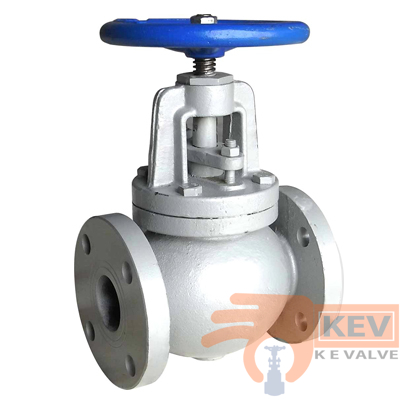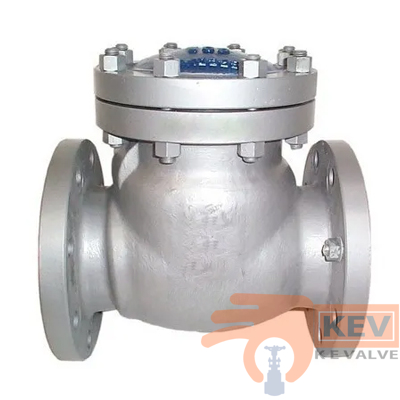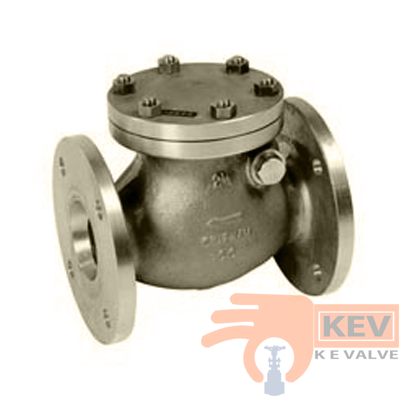The KE Valve Stockist generally stocks super duplex A182 F51 and A890 Gr. 4A gate, globe, check, ball, butterfly, plug, needle and custom made valves. Duplex stainless steels are extremely corrosion resistant, work hardenable alloys. Their microstructures consist of a mixture of austenite and ferrite phases. As a result, duplex stainless steels display properties characteristic of both austenitic and ferritic stainless steels. This combination of properties can mean some compromise when compared with pure austenitic and pure ferritic grades. Duplex stainless steels are in most cases, tougher than ferritic stainless steel. Strengths of duplex stainless steels can in some cases be double that for austenitic stainless steels. Whilst duplex stainless steels are considered resistant to stress corrosion cracking, they are not as resistant to this form of attack as ferritic stainless steel. However, the corrosion resistance of the least resistant Duplex stainless steel is greater than that for the most commonly used grades of stainless steel, i.e. 304 and 316. Duplex stainless steels are also magnetic, a property that can be used to easily differentiate them from common austenitic grades of stainless. Due to excellent corrosion resistance and high strength, the most widely used duplex stainless steel is 2205. The name 2205 comes from a typical composition of 22% Chromium and 5% Nickel. Other designations for 2205 are given below. There are many other duplex stainless steels, most of which are proprietary grades developed and produced by individual manufacturers. Corrosion Resistance of Duplex stainless steel Duplex stainless steels are extremely corrosion resistant. They have high resistance to intergranular corrosion. Even in chloride and sulphide environments, Duplex stainless steel exhibit very high resistance to stress corrosion cracking. The super duplex grades are even more resistant to corrosion. Heat Resistance of Duplex stainless steel The high chromium content of Duplex stainless steel that protects against corrosion, causes embrittlement at temperatures over about 300°C . At low temperatures duplex stainless steels have better ductility than the ferritic and martensitic grades. Duplex grades can readily be used down to at least -50°C . Fabrication of Duplex stainless steel Fabrication of all stainless steel should be done only with tools dedicated to stainless steel materials. Tooling and work surfaces must be thoroughly cleaned before use. These precautions are necessary to avoid cross contamination of stainless steel by easily corroded metals that may discolour the surface of the fabricated product. Heat Treatment of Duplex stainless steel Duplex stainless steel cannot be hardened by heat treatment. They can however be work hardened. Solution treatment or annealing can be done by rapid cooling after heating to around 1100°C . Machinability Although machinable, the high strengths of Duplex stainless steel makes machining difficult. As an example, machining of 2205 is around 20% slower than for 304. Machining can be enhanced by using the following rules: Welding of Duplex stainless steel Duplex stainless steel have good weldability. All standard welding processes can be used. They are not quite as easily welded as the austenitic grades but low thermal expansion in duplex grades reduces distortion and residual stresses after welding. The recommended filler material for 2205 stainless steel is 2209. Applications of Duplex stainless steel • Chemical processing, transport and storage • Oil and gas exploration and offshore rigs, as well as refining • Marine environments • Pulp & paper manufacturing • Chemical process plants Corresponding Standards: • EN/DIN 1.4462 X2CrNiMoN22.5.3 • AFNOR Z2CND22.05Az • AISI A182 F51 • UNS ASTM A276 S31803 / S32205 • BRANDS SAF 2205 – SANMAC • URANUS 45N • EN (10283) 1.4470 Duplex stainless steel is among various metals used in corrosion-resistant applications. Duplex’s machining rate of travel is similar to that of 316 stainless steel with high-speed steel tooling, and duplex requires fewer machining labor hours than high-nickel alloys. Duplex alloys are in a class with several other materials for various types of corrosion resistance. Some of the corrosive environments listed below depict these differences. There are many more types of corrosive conditions but these are some for which stainless and nickel alloys are suitable. Duplex is better than the 300 series in nearly every category. The consideration in the case of chlorides and halides must include costs. Duplex alloys are nearly equal in strength to the C276 and AL6XN alloys. The pitting and crevice corrosion resistance of C276 and AL6XN are only slightly superior to the duplex alloys’. The corrosion rate for duplex is 23 mil/year; AL6XN is 17 mil/year. The elements that provide the strength and corrosion resistance in duplex are much more common than those found in some high-nickel alloys. For instance C276 contains tungsten. Carpenter 20Cb contains columbium and tantalum. The 625 alloy contains columbium, tantalum, cobalt, and titanium. Chromium, nickel, molybdenum, and nitrogen are common elements that provide the strength and corrosion resistance in the duplex alloys.




